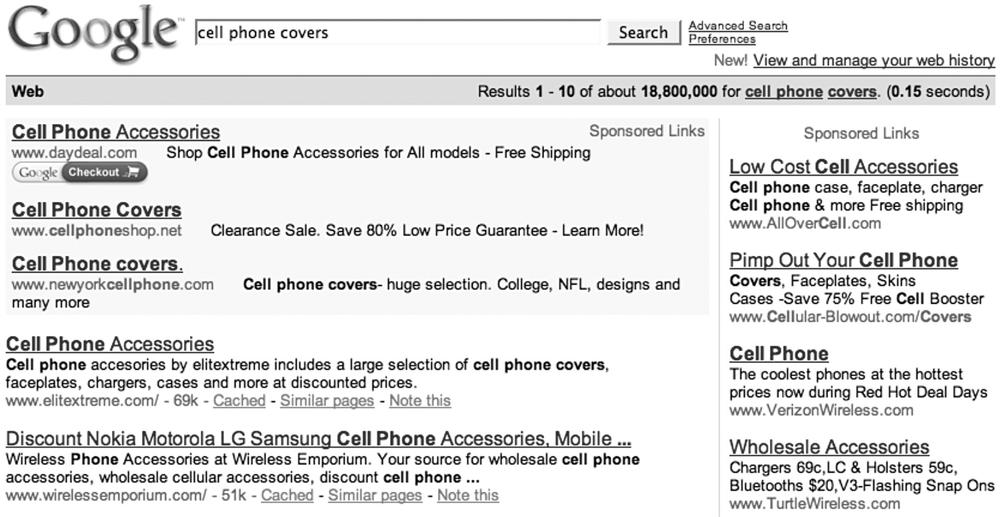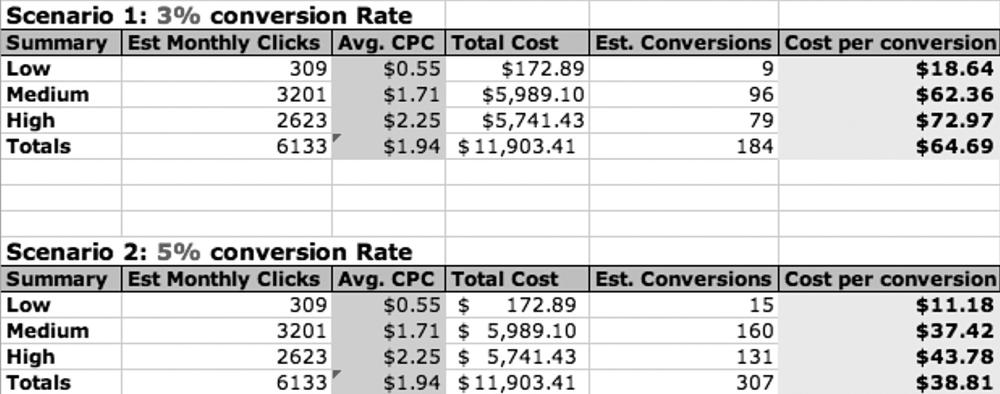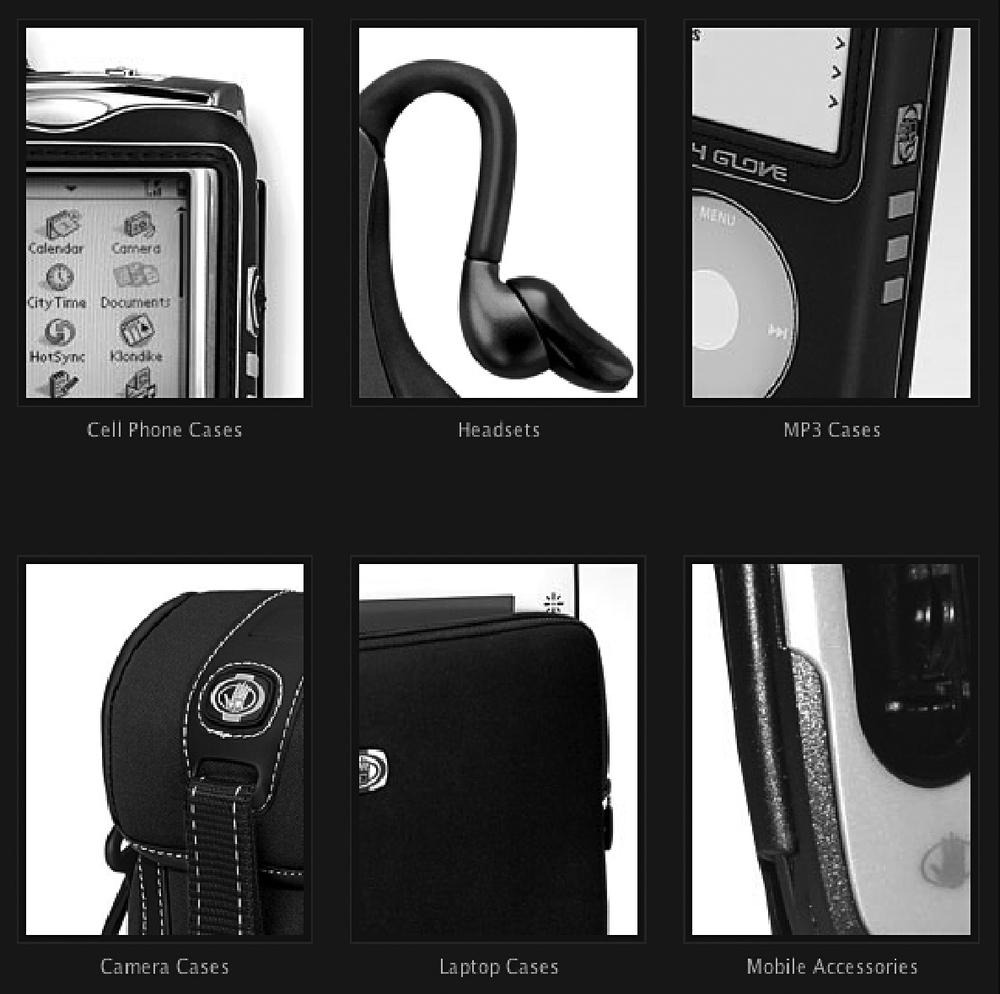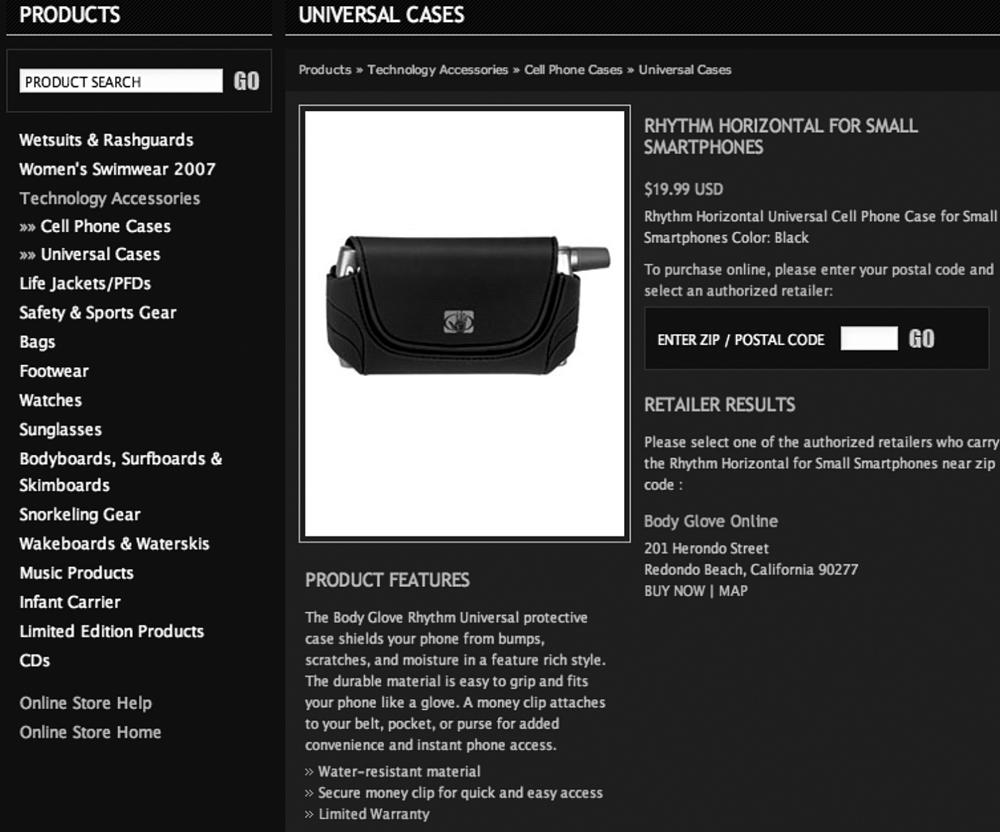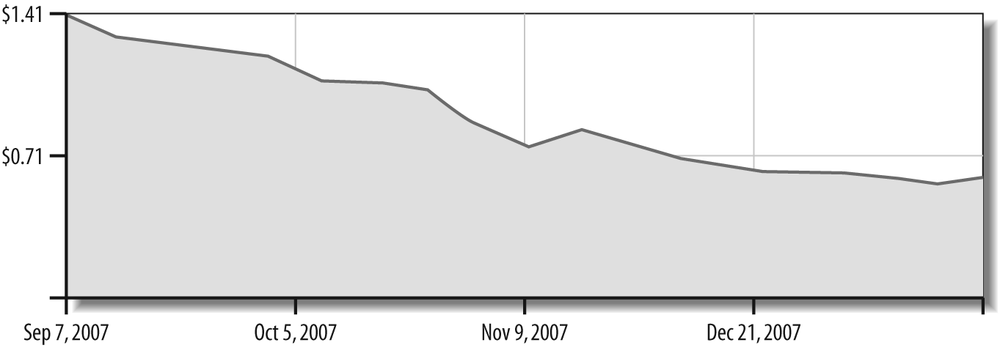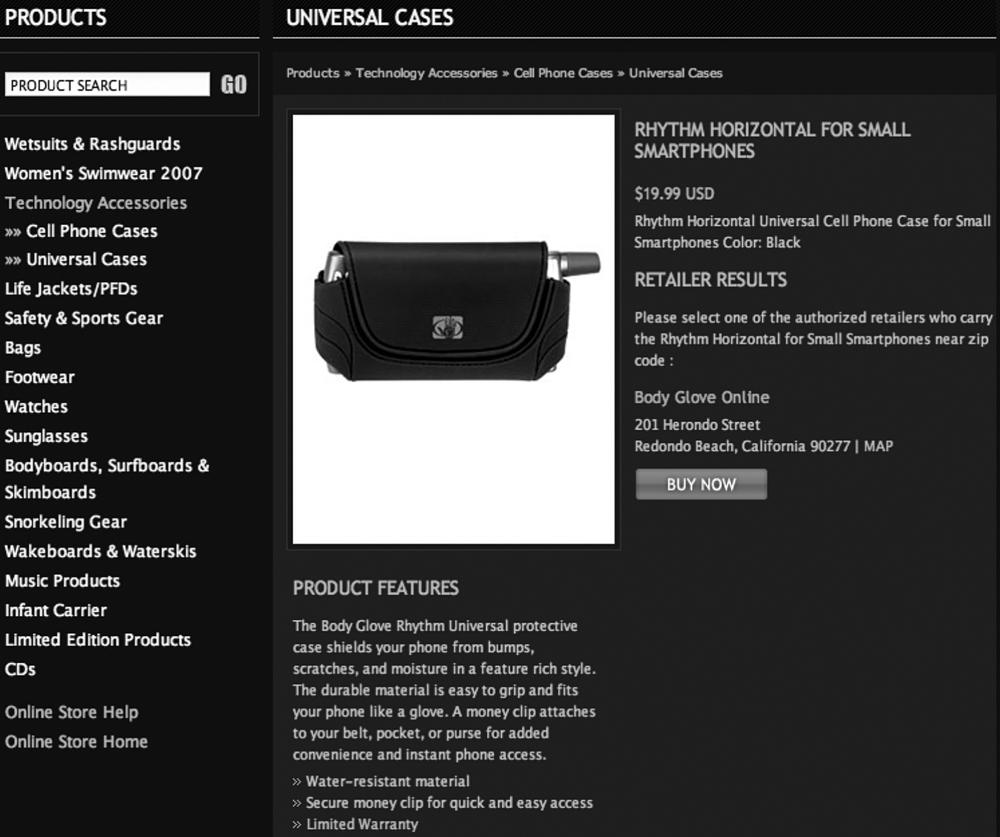In this chapter, we’ll show you how to put into action the pay-per-click (PPC) optimization techniques that you learned in Chapter 3 and the conversion boosting techniques you’ll learn in Chapter 5, as well as how to use metrics to guide optimization efforts, which we’ll cover in Chapter 10. This chapter features a case study that shows how to maximize your PPC advertising budget.
Body Glove International provides high-quality protective products for people and objects alike. In 2001, the Body Glove Mobile Accessories Group at Fellowes, Inc., developed protective cases for cell phones, laptops, and other handheld electronic devices. In 2007, Body Glove’s goal was to develop brand recognition and presence in this very competitive market through a combination of different types of advertising, including a PPC campaign. The primary goal of the campaign was to generate high visibility while minimizing cost per conversion.
We were responsible for creating the campaign and then improving it as a way to conduct an initial market assessment and identify the key ways in which it could be improved for the final quarter of 2007.
The market for cell phone cases is extremely competitive. As accessories, the products are fairly inexpensive to make and are used as promotional vehicles or branding tools. Competitors include cell phone case companies as well as cell phone manufacturers, such as Motorola and Nokia, and even cell phone service providers such as Verizon and AT&T (see Figure 4-1, which shows a typical search engine result from 2007 for cell phone covers).
Our first goal was to identify the projected traffic and costs for cell phone cases. We created a list of candidate keyphrases and then broke them into three categories based on their relative price:
Low cost per click (CPC): $0.25–$0.75
Medium CPC: $0.76–$1.50
High CPC: $1.51–$2.50
We used the list of candidate keyphrases to create two scenarios (see Figure 4-2). The first assumed a 3% conversion rate for any given click and the second assumed 5%, both typical for e-commerce sites. We then used a combination of tools, including Wordtracker, KeywordDiscovery, and Google’s Traffic Estimator tool, to identify the expected traffic and costs per conversion in the current market for each scenario.
Research confirmed our suspicions that this market was enormously competitive. In fact, the average price across all the keyphrases that we examined showed that the competition was willing to spend as much as $2.25 per click! At the conversion rates in scenarios 1 and 2, the average cost per conversion or sale is $64.69 or $38.81, more than the value of the product, which averages around $30. Typically, we’d like to see the cost per conversion at about 10% of the gross value. In this case, the cost per click is around 10%. At our estimated conversion rates, it appears that the cost per conversion exceeds the cost of the product! Advertising for cell phone cases is either a loss leader or a marketing exercise. If this campaign were run in isolation, it would not pay for itself through the sale of the item because the costs are simply too high. Service providers and phone resellers can afford to have a loss leader to promote phone covers, however, if they are making lots of money off service plans, warranties, and high-end phones.
Based on these findings, we developed two key goals for Body Glove Mobile Accessories:
- Phase one goal
To increase the conversion rate of paid search visitors by improving the usability and effectiveness of their website
- Phase two goal
To make cost per conversion less than or equal to the total value of the product
Armed with these specific goals we created the campaign.
We performed traditional keyphrase research, relying on the use of Body Glove’s brand name and the names of key cell phone brands for our root keyphrases. We focused on keyphrases and bids that were in the $0.75 to $1.25 range to keep costs down.
Initial ad copy was diverse and included a number of different experiments. Because few people considered surfing in the context of cell phones, we wanted to try to differentiate “cell phone cases” through that term as well as some others that were specific to the brand name, such as use of the word glove. Figure 4-3 shows four examples of starting ads that we used as a baseline for the project.
Our primary concern at the beginning of the project was the ability of the Body Glove site to convert. Although the design of the site was arresting, with handsome shots of Body Glove products (see Figure 4-4), the actual purchase pages lacked prominent calls to action that were going to help conversions (see Figure 4-5).
Body Glove agreed with our assessment but wanted to begin immediately to learn about the market interest and potential traffic. We agreed that the pages would be incrementally improved in conjunction with the ad copy and keyphrases as the campaign progressed.
With our long-term plans for incremental improvement in place, we initiated the campaign.
Figure 4-5 shows the original product page. Note the call to action, which is simply an invitation to enter a zip or postal code. After the code is entered, the retailer results would show up and the “buy now” call to action would appear as a text hyperlink. Not only was this call to action fairly small, but it was also below the fold on most computer screens.
As expected, initial conversion rates were fairly low and costs per conversion were fairly high because of the extremely competitive market and the first iteration of the product pages. From August until mid-October, we incrementally tweaked bids and some ad copy to improve click-through rates (CTRs) and CPC. The average CPC steadily improved, while the average ad position slowly improved from about 2 to 1.8 as our quality scores improved. Figure 4-6 shows the improvement in average CPC from September 2007 through January 2008, as the holiday season progressed.
We were particularly pleased with the steadily decreasing CPC during the very competitive and busy Christmas season in December, when traffic and spending from competitors increased dramatically.
On November 1, 2007, the Body Glove Mobile Accessories Group implemented our design recommendations on their product pages, as shown in Figure 4-7.
Now the call to action is above the fold; it is also clearly marked by a blue gradient button with BUY NOW in a large font. The name of the brick-and-mortar dealer is still visible as well. This was a critical requirement of the marketing goals for Body Glove.
The results were immediate and dramatic. The following week’s conversion rates increased by 100%, and between November 2 and December 20, 2007, the conversion increased 600% from 0.34% to nearly 2.4%. The majority of these changes came from improvements in the landing pages and the boost from the Christmas shopping season. The only major change made to the PPC campaign at this time was a general decrease in the use of underperforming keyphrases around November 9. Figure 4-8 shows the dramatic increase in conversion rate.
Note that the increased conversion rate stayed relatively steady after the holiday season, indicating that the landing and product pages continued to be effective in slower market periods.
Between December 1 and December 20, we also dramatically reduced the number of keyphrases on which we were bidding. We focused on the most visible and highest-quality terms, which created high CTRs from qualified visitors to take advantage of the new landing and product pages. In particular, we found unique keyphrases that were relatively low cost and not very competitive, based on their bids and number of clicks. This allowed us to enjoy high CTRs and conversion rates even after the holiday season.
Overall, during the months of November and December the Body Glove cell phone case campaign enjoyed a conversion rate of 1.67% at a cost per conversion of about $39.63. This was slightly higher than the average price of a cell phone case, but with improved landing pages, the conversion rate and the cost per conversion should continue to improve dramatically.
Accessory product markets are incredibly competitive. Body Glove’s combination of brand recognition and quality gave the company advantages that many companies don’t enjoy. Body Glove was, however, still competing against companies that see cell phone accessories as promotional tools first and actual products second. Through a careful PPC campaign and incremental improvements to Body Glove’s website product pages, Body Glove’s accessory conversions showed excellent progress. This effort demonstrated the importance of steady, incremental improvement and the use of metrics to improve on previous findings. We expect some exciting years ahead for Body Glove in the online marketing space.

